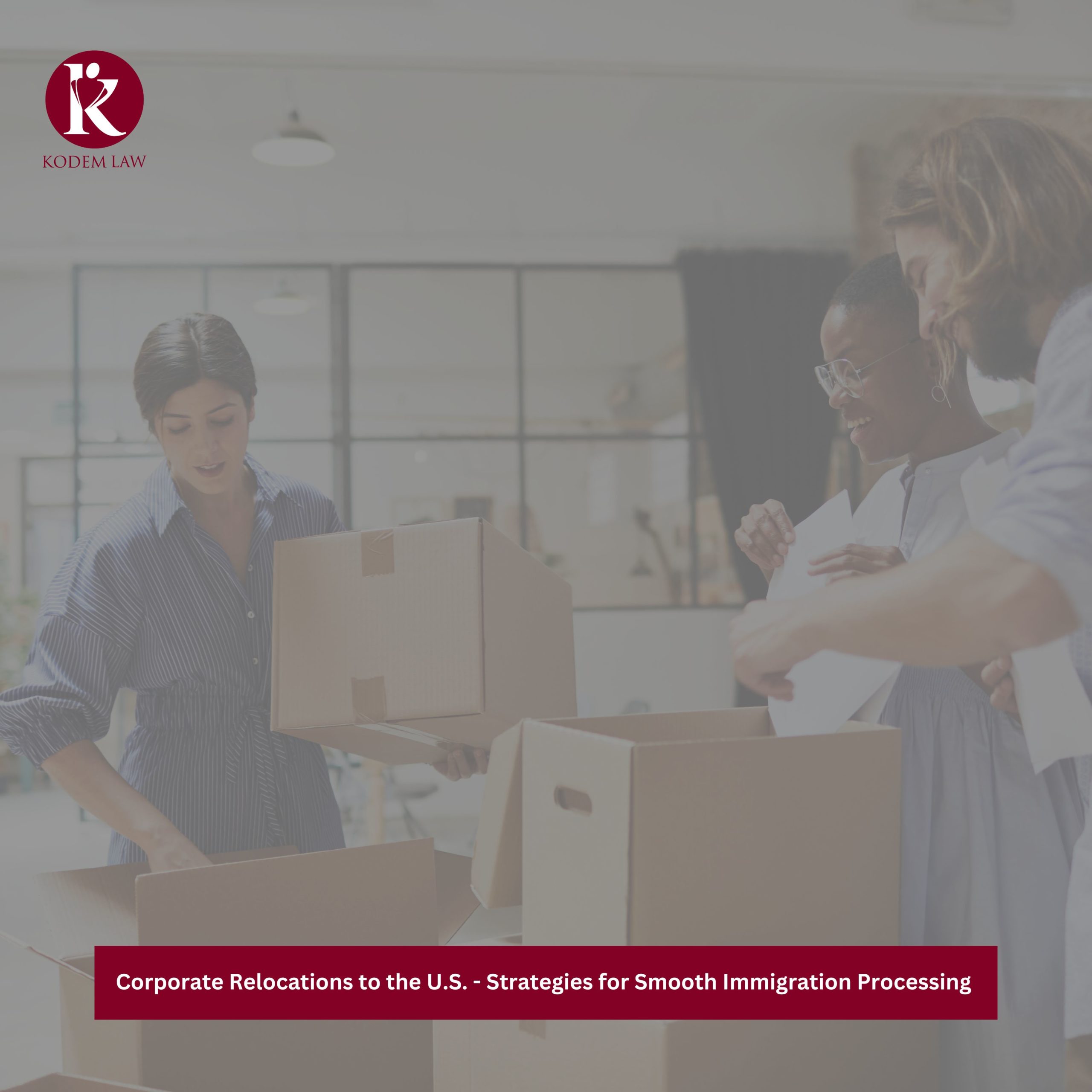
Expanding corporate operations or relocating employees to the United States requires a thorough grasp of the complex frameworks that shape U.S. immigration laws. To ensure a smooth transition and the effective transfer of talent, companies must adopt well-planned strategies that streamline immigration processes and mitigate potential challenges.
This article offers insights into the key steps and strategies to navigate corporate relocations, providing guidance on compliance, visa options, and best practices for a hassle-free immigration experience.
Understanding U.S. Immigration Policies for Corporations
Corporate relocation requires understanding immigration policies across different regions. Here’s a comparison of the U.S., Canada, and the EU, along with insights into employment-based visas for corporate relocation:
United States
- Employment-Focused Visas: Options like H-1B and L-1 are tailored for specific roles but are subject to strict quotas and timelines.
- Complex Compliance: U.S. immigration laws require businesses to meet strict wage laws and documentation standards, increasing legal oversight.
- STEM Priority: The U.S. immigration system prioritizes specialized talent, particularly in STEM fields, to boost innovation and development.
- Key Visa Types for Corporate Relocations:
- H-1B Visa: Designed for specialized professionals in fields like IT, engineering, and healthcare.
- L-1 Visa: Allows intracompany transfers, enabling executives, managers, and employees with specialized knowledge to work in the U.S.
- O-1 Visa: For individuals with extraordinary abilities in fields such as arts, sciences, education, and business.
Canada
- Fast-Track Immigration: The Global Talent Stream accelerates visa processing, often completing the process within weeks.
- Pathways to Residency: Canada offers clear pathways from work visas to permanent residency, allowing talent to settle long-term.
- Pro-Immigration Policies: Canada actively addresses labor shortages through skilled worker programs, encouraging talent retention.
European Union (EU)
- Unified Immigration Framework: The EU Blue Card simplifies the process of hiring employees across member states.
- Mobility Within the EU: Employees have the flexibility to relocate easily between EU countries under certain visa categories.
- Employee-Centered Policies: The EU focuses on protecting worker rights and facilitating family reunification for expatriates.
Compliance Considerations for U.S. Corporate Relocations
- Businesses must adhere to U.S. immigration laws to avoid penalties and ensure the legitimacy of the relocation process.
- Key compliance requirements include understanding employment-based visa quotas, prevailing wage mandates, and the associated timelines.
Key Considerations for Corporations Planning Employee Relocations
Effective corporate relocation planning entails addressing several critical factors:
1. Visa Selection Strategy: Align corporate objectives with the specific eligibility requirements and benefits of the relevant visa category.
2. Timeline Optimization: Recognize that immigration processes are protracted and initiate preparations well in advance to mitigate operational disruptions.
3. Comprehensive Documentation: Ensure employees possess requisite credentials, including valid travel documents, professional qualifications, and employment verification.
4. Regulatory Compliance: Accommodate variations in state-specific legal frameworks governing taxation, labor, and corporate policies.
The Role of Legal Experts in Immigration Processing
Immigration lawyers and consultants play a pivotal role in simplifying the relocation process. Their expertise ensures that:
- Applications are correctly prepared and submitted.
- Deadlines are met to prevent disruptions.
- Companies remain compliant with U.S. laws and regulations.
Preparing Employees for U.S. Relocation
Relocating employees to the U.S. involves both professional and personal adjustments. Corporations can ease this transition by:
1. Orientation Sessions: Offering guidance on workplace expectations, protocols, and cultural differences to ensure smooth integration.
2. Logistical Support: Assisting with housing, transportation, and educational needs for accompanying dependents to ensure a comfortable relocation process.
3. Cultural Acclimation Programs: Providing resources and training to help employees adjust to the U.S. culture, boosting their productivity and ease of adaptation.

Overcoming Common Challenges in U.S. Corporate Immigration
Corporate relocations often come with their fair share of obstacles. To ensure the process runs smoothly, businesses must proactively address these common challenges:
- Visa Denials: One of the most significant hurdles is the risk of visa denials. To minimize rejection chances, businesses should focus on thorough documentation and work closely with legal experts to ensure compliance with visa requirements.
- Regulatory Volatility: U.S. immigration laws and policies are constantly evolving, making it crucial for companies to stay informed and agile. Regularly reviewing and adapting to changes in immigration statutes and administrative policies helps avoid compliance issues.
- Cultural Integration Barriers: The transition to a new corporate environment in the U.S. can be challenging, especially in terms of cultural integration. To ease this process, mentorship programs and structured onboarding initiatives can play a key role in helping relocated employees adjust quickly and effectively.
Post-Arrival Support for Relocated Employees
Once employees arrive in the U.S., their integration into their new roles and environments is critical for their success. Businesses can ensure a smoother transition by offering ongoing support:
- Visa Renewals and Adjustments: Providing continuous support for visa renewals and any necessary status adjustments helps employees feel secure in their new roles and minimizes the risk of legal complications.
- Workplace Integration: Structured mentorship programs can ensure that employees are not just settling into their roles but also integrating effectively into the workplace culture. This helps maintain morale and productivity.
- Addressing Relocation Concerns: Relocating to a new country comes with personal challenges as well. Offering resources to address any personal or relocation-related concerns can ease employee stress and foster a more productive work environment.
Long-Term Immigration Strategies for Businesses
To support long-term growth and retention of talent, companies should develop strategic approaches to immigration that go beyond the immediate relocation process. Some key strategies include:
- Employment-Based Green Cards: For employees who have proven their value, applying for an employment-based Green Card can provide long-term stability, offering them permanent residency and aligning their status with the company’s objectives.
- Building an Internal Immigration Team: Having a dedicated team or point of contact within the company to manage immigration-related matters ensures businesses can handle future needs without delays.
- Partnerships with Immigration Law Firms: Establishing relationships with expert immigration law firms provides companies with the legal guidance they need to navigate complex immigration policies, ensuring compliance and mitigating risk.
How Kodem Law Can You?
Corporate relocations to the United States require careful planning, legal compliance, and support for employees. Understanding immigration rules and following legal steps helps companies achieve smooth operations and support their teams.
Kodem Law helps businesses by creating custom legal strategies, staying updated on immigration rules, and guiding them through each step of the relocation process. We handle visa applications, assist with documentation, and prepare for any unexpected challenges to ensure smooth transitions. With the right approach, companies can meet their goals while building a strong and globally mobile workforce.

